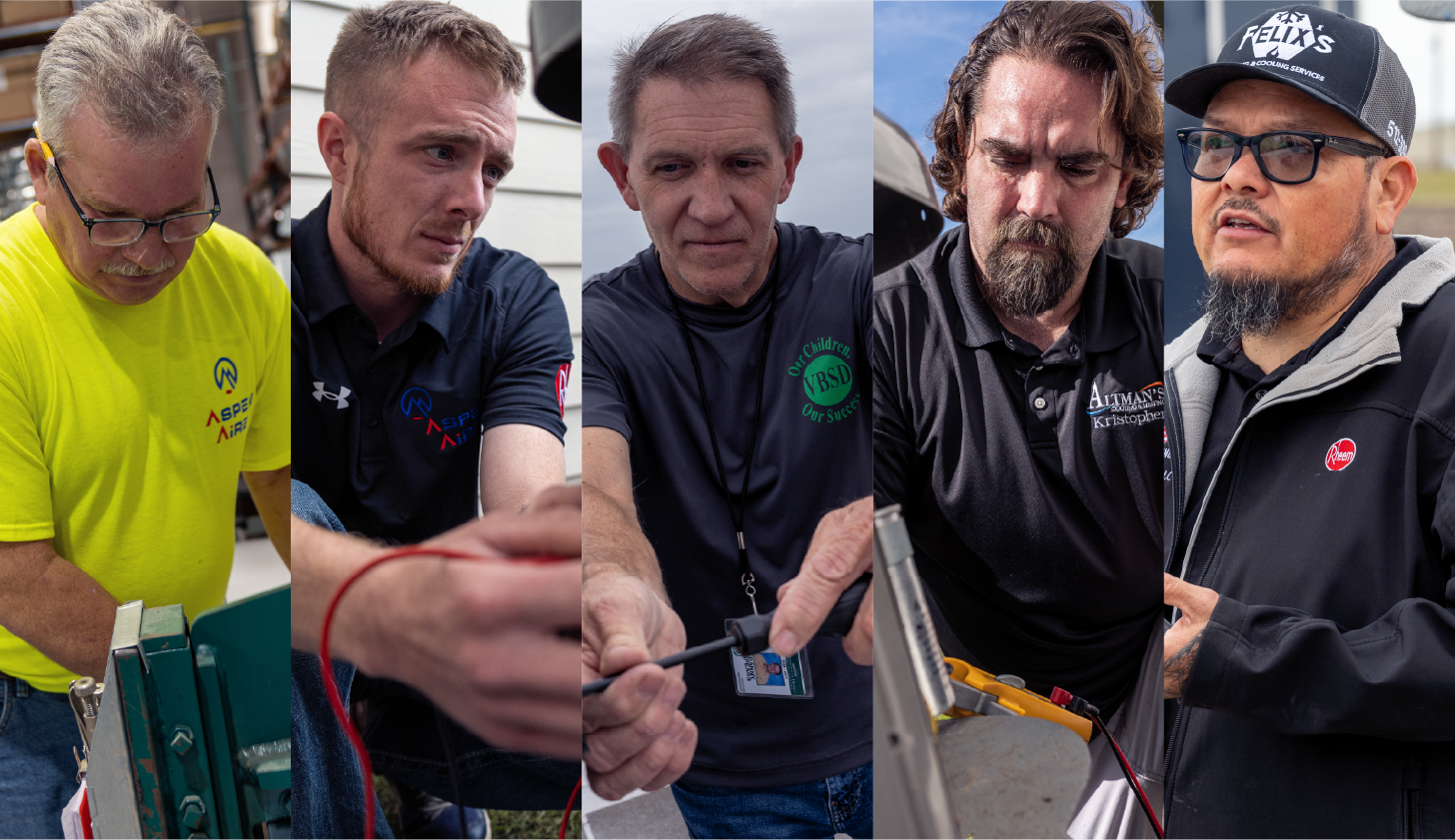What to Know About the Upcoming HVAC Efficiency and Refrigerant Regulation Changes
April 27, 2022
HVAC regulation changes are coming. Here’s what you need to know about the updated efficiency and refrigerant standards.


Regulatory Affairs Expert Allison Skidd Breaks Down the Details
It’s no secret that 2023 is going to be a big year in HVAC. The looming efficiency changes from the U.S. Department of Energy, plus the refrigerant transition set to take place not long after, mean changes to how contractors do business. And without careful attention, these new regulations can impact your bottom line.
We asked Allison Skidd, Senior Manager of Regulatory Affairs at Rheem Manufacturing, about the upcoming industry changes and what contractors need to know to prepare for January 1. Here’s what she said.
How will the new energy efficiency regulations impact contractors?
Many people who have been in HVAC for a long time have been through an efficiency change before, and it’s a big deal. But this one has some unique aspects to it that make it even more complex and challenging for industry.
First, there will be an entirely revised test procedure used to certify and rate equipment. That test procedure is going to bring about new efficiency metrics. For example, instead of SEER, the seasonal energy efficiency ratio that we’ve seen for years and years, efficiency will be represented as SEER2 as equipment is tested in a different way. We’ll start seeing this rating appear on equipment in preparation for the change in 2023.
What is the key difference in the new test procedure?
The new test procedure from the Department of Energy is commonly known as Appendix M1, which refers to its location in the Code of Federal Regulations, and it will apply to new equipment in 2023. The changes in the test procedure make it more representative of today’s installations in homes, which is a good thing.
You can think of it like converting inches to centimeters. Where before we had SEER, now we have to convert that to SEER2, EER will be EER2, and HSPF will be HSPF2. It sounds a little complicated, but I think once these systems are out there, and we get used to seeing them and converting back and forth, people will become familiar what these new ratings mean. And furthermore, the ratings will be available in the AHRI directory, so you can view discontinued ratings and new ratings for comparison.
It’s also important to note that three-phase equipment less than 65,000 BTUh will continue to be rated with SEER, EER and HSPF. The Department of Energy has proposed a rule that would change the metrics of these products to match single-phase equipment.
Do these new efficiency standards apply nationally?
The new efficiency requirements for 2023 apply nationally unless they’re superseded by a regional standard. This is critical for distributors and contractors to be aware of, as there are different requirements for the North, Southeast and Southwest. The key difference is that for certain product types in the Southeast and Southwest, the compliance basis is on the date of installation of a system, while for the national standard, compliance is based on the date the system was manufactured.
What could enforcement of these new efficiency regulations look like?
I receive a lot of questions about compliance and enforcement and how it will be tracked. It’s a great question and very interesting in the answer given the complexity of how the 2023 standards compliance will work.
In the Southeast and Southwest, as we know, the standards apply based on system installation date. That means that compliance is not solely the responsibility of the manufacturer. So, while you have OEMs making air conditioning and heat pumps that are compliant with the 2023 standards, starting January 1, you still need to make sure that downstream of that, you still have the distributors and contractors looking at what they are installing to make sure that it’s compliant.
The Department of Energy has expressed that they will be considering all enforcement cases—not just manufacturers, but again, contractors. You can be held responsible if you knowingly install a noncompliant unit.
What can contractors do to prepare for the new standards?
As the January 1, 2023, compliance deadline approaches, contractors and distributors should really be thinking about inventory and doing their phase-in and phase-out planning now. There is not that much time before the compliance deadline arrives, and Rheem is already introducing new models on the market so that you can start to stock up on compliant units for the coming year.
Following the efficiency changes, there’s another big change on the horizon for refrigerants. What will that look like?
If we step back a couple of years, you’ll remember that California was hot on the trail to implement a low global warming potential, or GWP, requirement for air conditioning by 2023. But standards and codes were not quite ready to accommodate that change, so it needed to be postponed. Now the California requirement lines up with what we anticipate will be the national requirement to switch to low-GWP, and we expect that to happen in 2025.
The important thing to remember about the refrigerant transition is that the anticipated limit for GWP for air conditioning is likely to be 750. And that means that R410A will no longer be able to be used in new systems.
What do people need to know about flammable refrigerants being used in air conditioning?
The advent of flammable refrigerants in air conditioning required that safety standards be updated to allow for their use in equipment and buildings. These safety standards, in some cases, now require leak detection and other mitigation measures to ensure safe operation. You’ll start to see these units as the building codes adopt the language of the safety standards, which is a state-by-state process.
How will contractors and building owners be affected by refrigerant regulations?
Installers should seek the latest training on how to handle and use A2L refrigerants in new equipment. They should also be aware that regulations under the AIM Act call for the use and return of refillable refrigerant cylinders beginning on January 1, 2025. Although R-410A, R-134a and other higher GWP HFC refrigerants will still be available for service, prices could be affected as availability decreases throughout the phase down. Increased reuse, recovery and reclamation of high GWP refrigerants will be essential in offsetting the predicted scarcity of virgin HFC refrigerants.
At Rheem, we know these major regulation changes can be overwhelming. We’re dedicated to providing the key information and support needed to navigate our changing industry. Visit rheem.com/hvacknowzone to download a comprehensive regulatory guide and stay up to date on the latest in HVAC.







